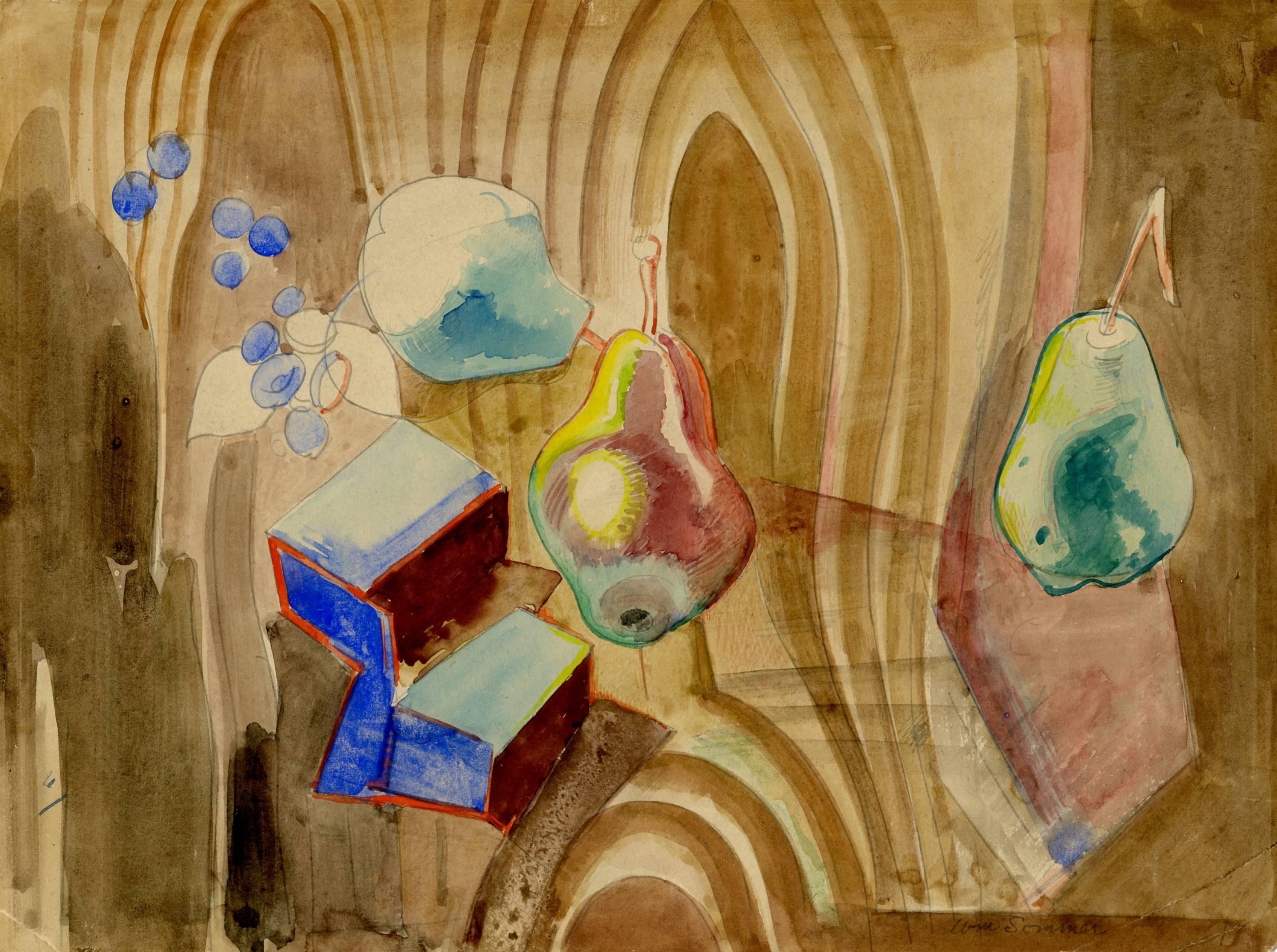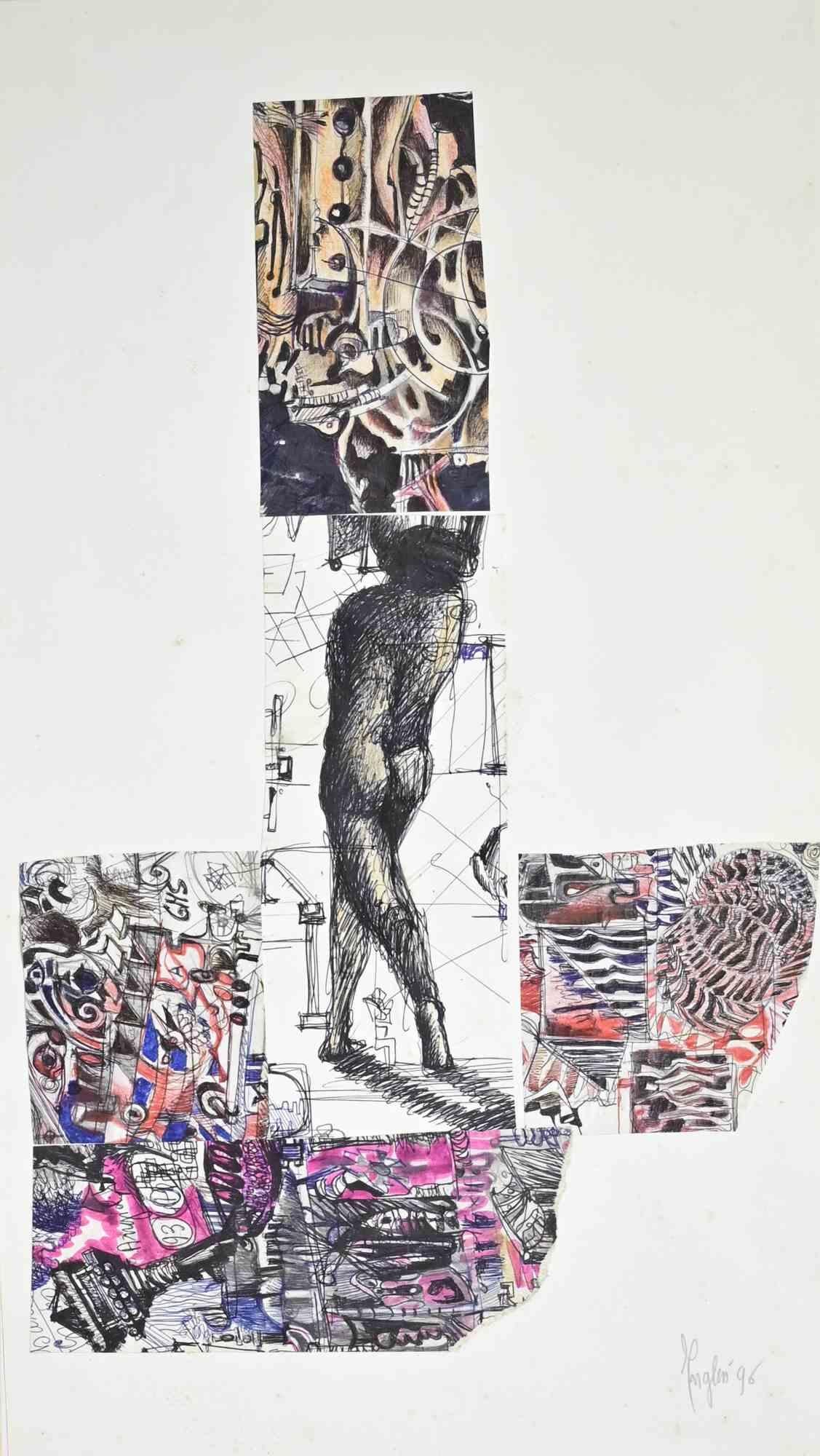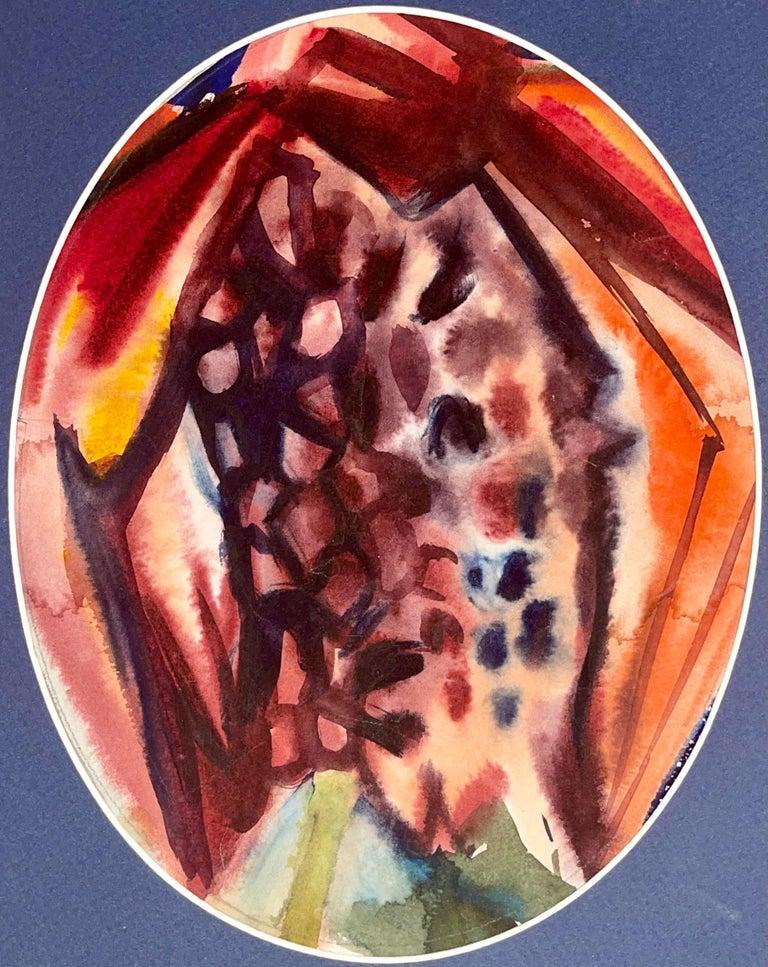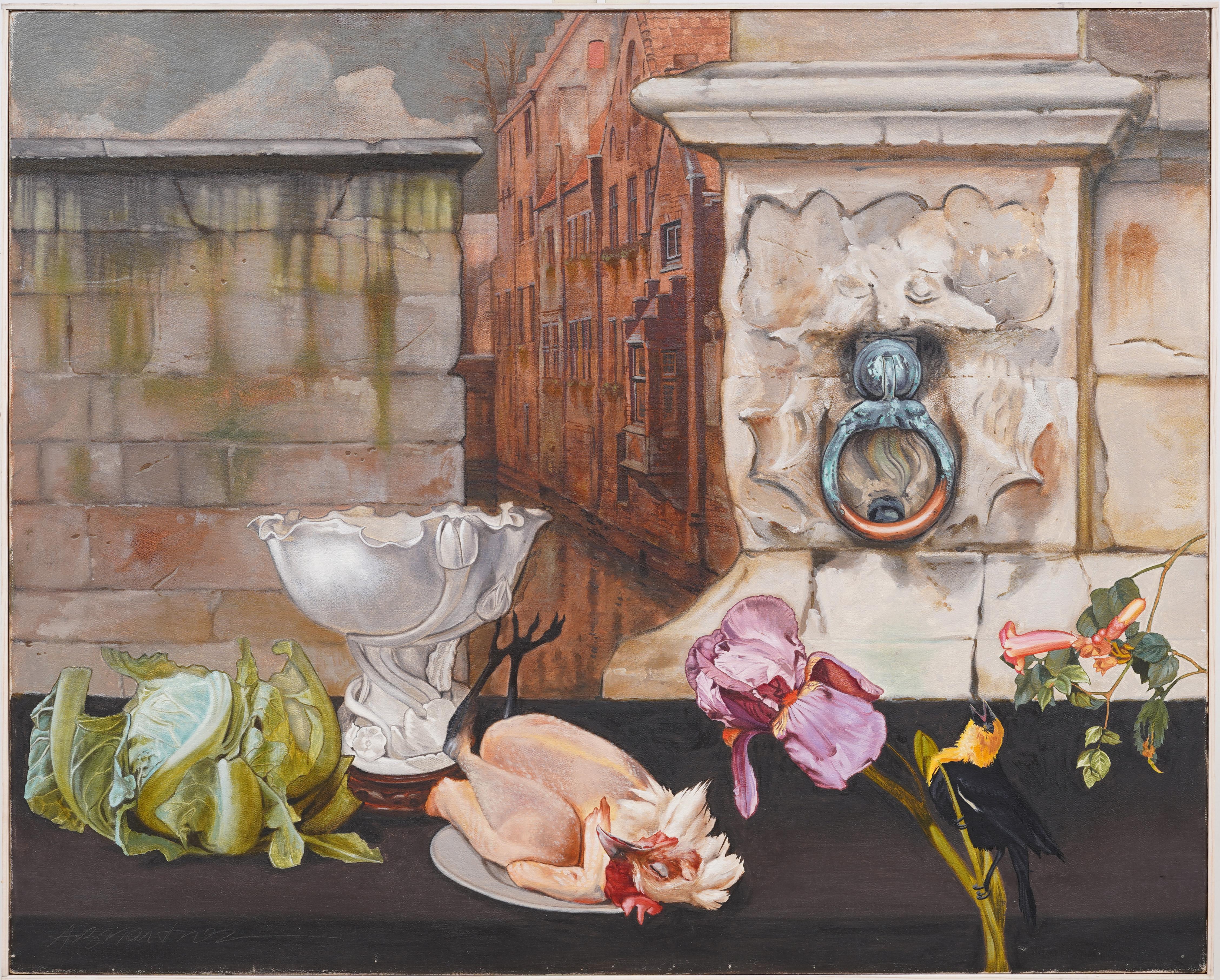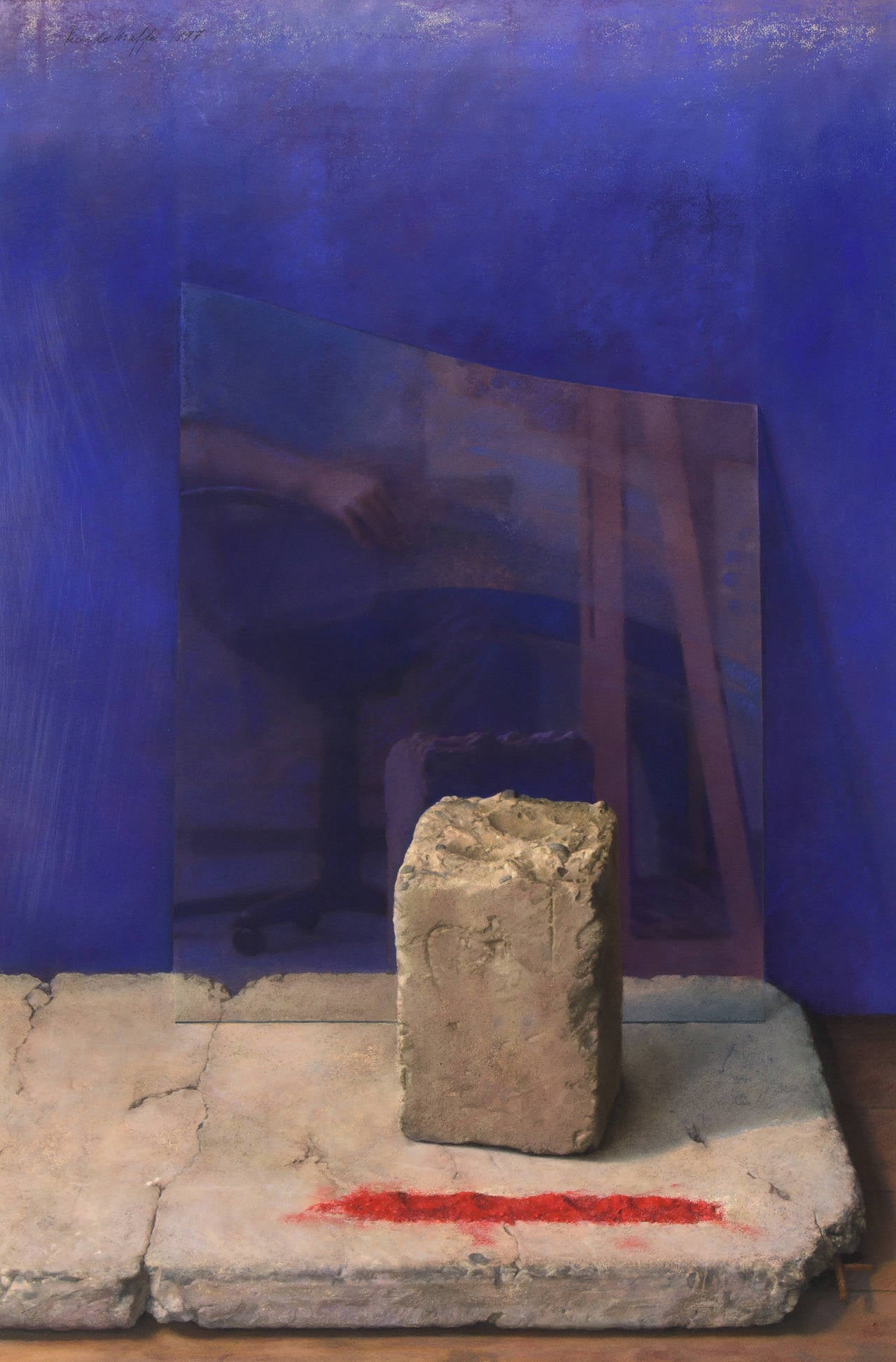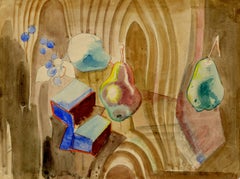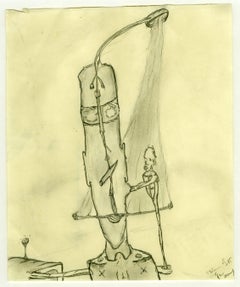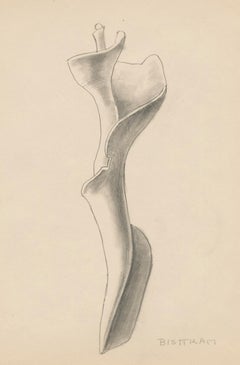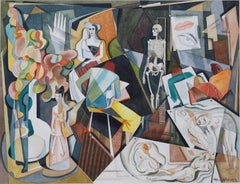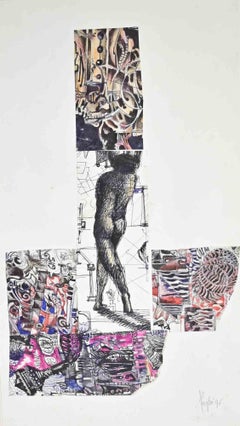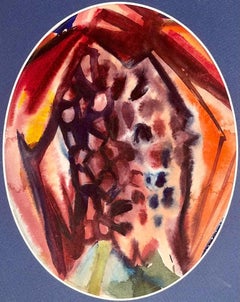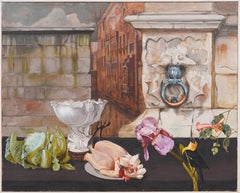Items Similar to Trompe-l'Oeil Study
Want more images or videos?
Request additional images or videos from the seller
1 of 9
Eugene BermanTrompe-l'Oeil Study1934
1934
$2,500
£1,910.75
€2,202.29
CA$3,580.48
A$3,924.10
CHF 2,049.24
MX$47,084.65
NOK 25,731.69
SEK 24,238.30
DKK 16,445.46
About the Item
Trompe-l'Oeil Study
Watercolor on heavy wove paper, 1943
Signed with the artists initials, lower center of image; Dated 1943, lower center of image
Provenance:
Swann Galleries, 2007, realized $2,640
Condition: Excellent. Fresh colors. Framed with conservation glass.
Sheet: 14 3/4 x 11 1/4"
Frame size: 20 3/4 x 17
Berman brothers (painters)
From Wikipedia, the free encyclopedia
Eugene Berman in Italy in the 1960s
Eugène Berman (Russian: Евгений Густавович Берман; 4 November 1899, Saint Petersburg, Russia – 14 December 1972, Rome) and his brother Leonid Berman (1896 – 1976[1]) were Russian Neo-romantic painters and theater and opera designers.
Early years
Born in Russia, the Bermans fled the Russian revolution in 1918. In Paris the Bermans exhibited at the Galerie Pierre where their work earned them the name "Neo-Romantics" for its melancholy and introspective qualities, having taken inspiration from the Blue Period paintings of Pablo Picasso. Other Neo-Romantic painters were Christian Bérard, Pavel Tchelitchev, Kristians Tonny and, later in America, their friend Muriel Streeter (wife of their art dealer Julien Levy).
Eugène's work was characterized by lonely landscapes featuring sculptural and architectural elements, often ruins, rendered in a neo-classical manner,[2] whereas that of Leonid depicted beaches with fisherman's boats and nets in many parts of the world. In 1935 Eugène left for New York where he exhibited frequently at the Julien Levy Gallery (as did Leonid after the war). Later, in the 1940s, Eugène settled in Los Angeles and married the actress Ona Munson, while Leonid remained in New York and married the harpsichordist Sylvia Marlowe. In 1950 he exhibited at Instituto de Arte Moderno, Buenos Aires. In 1950, Berman was elected into the National Academy of Design as an Associate member, and became a full member in 1954.
Later years and death
In America, Eugène became well known as a stage designer for ballet and opera. Following the suicide of his wife in 1955, he moved to Rome where Princess Doria-Pamphilj provided an apartment and studio for him in a wing of her palazzo on the via del Corso. In 1957 he was working with Sylvia Guirey on a new production for the Metropolitan Opera of Don Giovanni. Berman continued to paint in Italy until his death in 1972. Leonid died in New York in 1976.
Works
Ballet Imperial by George Balanchine, Sadler's Wells Ballet, London (1950).
Legacy
Eugene Berman's work can be found in a number of institutions, including:
McNay Art Museum
Museum of Modern Art
Art Institute of Chicago
Hirshhorn Museum and Sculpture Garden
Courtesy Wikipedia
- Creator:Eugene Berman (1899 - 1972, Russian)
- Creation Year:1934
- Dimensions:Height: 14.75 in (37.47 cm)Width: 11.25 in (28.58 cm)
- Medium:
- Movement & Style:
- Period:
- Condition:Excellent. Fresh colors.
- Gallery Location:Fairlawn, OH
- Reference Number:Seller: FA96481stDibs: LU14015914002
About the Seller
5.0
Recognized Seller
These prestigious sellers are industry leaders and represent the highest echelon for item quality and design.
Platinum Seller
Premium sellers with a 4.7+ rating and 24-hour response times
Established in 1978
1stDibs seller since 2013
815 sales on 1stDibs
Typical response time: <1 hour
Associations
International Fine Print Dealers Association
- ShippingRetrieving quote...Shipping from: Fairlawn, OH
- Return Policy
Authenticity Guarantee
In the unlikely event there’s an issue with an item’s authenticity, contact us within 1 year for a full refund. DetailsMoney-Back Guarantee
If your item is not as described, is damaged in transit, or does not arrive, contact us within 7 days for a full refund. Details24-Hour Cancellation
You have a 24-hour grace period in which to reconsider your purchase, with no questions asked.Vetted Professional Sellers
Our world-class sellers must adhere to strict standards for service and quality, maintaining the integrity of our listings.Price-Match Guarantee
If you find that a seller listed the same item for a lower price elsewhere, we’ll match it.Trusted Global Delivery
Our best-in-class carrier network provides specialized shipping options worldwide, including custom delivery.More From This Seller
View AllStill Life with Tromp L'Oeil
By William Sommer
Located in Fairlawn, OH
Still Life with Tromp L'Oeil
Graphite and watercolor on a book page.
Signed in ink by the artist lower right corner
(see photo)
Provenance:
Estate of the artist (Estate No. 00916 verso)
Ray Sommer (the artist's son)
Joseph M. Erdelac (No. 18 JME verso)
Book page verso is an illustration of a Durer woodcut...
Category
1920s American Modern Still-life Drawings and Watercolors
Materials
Watercolor
Untitled
Located in Fairlawn, OH
Bömmels belonged to the co-founders of the Cologne artist group Mülheimer Freiheit , which also included Hans Peter Adamski , Walter Dahn , Jiří Georg Dokoupil , Gerard Kever and Ger...
Category
1980s Surrealist Figurative Drawings and Watercolors
Materials
Graphite
Untitled, Still Life of Shell
Located in Fairlawn, OH
Untitled, Still Life of Shell
Graphite on paper, 1945-1951
Signed lower right in pencil "Bisttram" (see photo)
Condition: Excellent
Sheet size: 9.63 x 7 .5 inches
EMIL BISTTRAM (189...
Category
1940s American Modern Still-life Drawings and Watercolors
Materials
Graphite
The Model
By William C. Grauer
Located in Fairlawn, OH
The Model
Watercolor on paper, c. 1930
signed lower right (see photo)
Condition: Excellent
A few bits of adhesive residue verso
Colors fresh and unfaded
Housed in a Marin style meta...
Category
1930s American Modern Interior Drawings and Watercolors
Materials
Watercolor
Untitled
By Fannie Hillsmith
Located in Fairlawn, OH
Untitled
Collage and crayon drawing, 1967
Signed and dated lower center (see photo)
Condition: Small imperfections from the creative process
Small tear on the left sheet edge (repai...
Category
1960s Abstract Abstract Drawings and Watercolors
Materials
Crayon
Impossible Solutions at The Fountain of Youth
Located in Fairlawn, OH
Impossible Solutions at The Fountain of Youth
Collage on paper, 1987
Signed with the artist's initials and datedlower left
Condition: Good, with the ...
Category
1980s Surrealist Figurative Drawings and Watercolors
Materials
Paper
You May Also Like
Surreal Composition - Drawing by Alberto Inglesi - 1996
Located in Roma, IT
Ink and watercolor on paper realized by Alberto Inglese in 2004.
Hand signed and dated in pencil.
Includes a contemporary wooden frame cm. 77x57.
Very good condition.
Category
1990s Contemporary Figurative Drawings and Watercolors
Materials
Ink, Watercolor
"Three Medusas, " Eugene Berman, Surrealism, Greek Still Life
By Eugene Berman
Located in New York, NY
Eugene Gustavovitch Berman (1899 - 1972)
Three Medusas, 1968
Watercolor on paper
12 x 9 1/2 inches
Initialed and dated lower right
Provenance:
Larcada Gallery, New York
Frank Oehlsc...
Category
1960s Surrealist Still-life Drawings and Watercolors
Materials
Paper, Watercolor
$4,400 Sale Price
20% Off
(Abstract Still Life) Untitled, 1964, Ian Hornak — Painting
By Ian Hornak
Located in Fairfield, CT
Artist: Ian Hornak (1944-2002)
Title: (Abstract Still Life) Untitled
Year: circa 1964
Medium: Acrylic on illustration board
Size: 10 x 9 inches
Condition: Good
Provenance: Estate of ...
Category
1960s Photorealist Nude Drawings and Watercolors
Materials
Watercolor, Archival Paper
$2,600 Sale Price
20% Off
Vintage American Modernist Trompe L'Oeil Surreal Still Life Exhibited Painting
Located in Buffalo, NY
Amazing American modernist still life oil painting by Adrian Martinez (Born 1949) . Oil on canvas. Exhibited.
Category
1960s Surrealist Still-life Paintings
Materials
Canvas, Oil
Untitled (Study for the Box)
By Ricardo Maffei
Located in Palm Desert, CA
A pastel on paper executed in deep blues, tans and reds by contemporary artist Ricardo Maffei. Signed upper left, "Ricardo Maffei, 1997."
Provenance:
General Electric Corporate C...
Category
1990s Contemporary Still-life Drawings and Watercolors
Materials
Paper, Pastel
Still Life - Drawing By Reynold Arnould - Mid-20th Century
Located in Roma, IT
Still Life is an Ink and tempera drawing realized by Reynold Arnould (Le Havre 1919 - Parigi 1980).
Good condition on a white envelope.
Titled on the lower right corner, another s...
Category
Mid-20th Century Modern Still-life Drawings and Watercolors
Materials
Paper, Ink, Tempera
More Ways To Browse
Trompe L Oeil
Trompe L Oeil Vintage
In The Manner Of Picasso
Trompe L Oeil Painting
Julien Levy
George Balanchine
Berard Christian
Don Giovanni
Leonid Berman
Kristians Tonny
Ning Yeh
Whitney Museum
Black And White Photography 24 X 24
Riviera Vintage
Prints Signed By Artist
Antique Prints Engraving
1959 Painting
Contemporary Art On Paper
